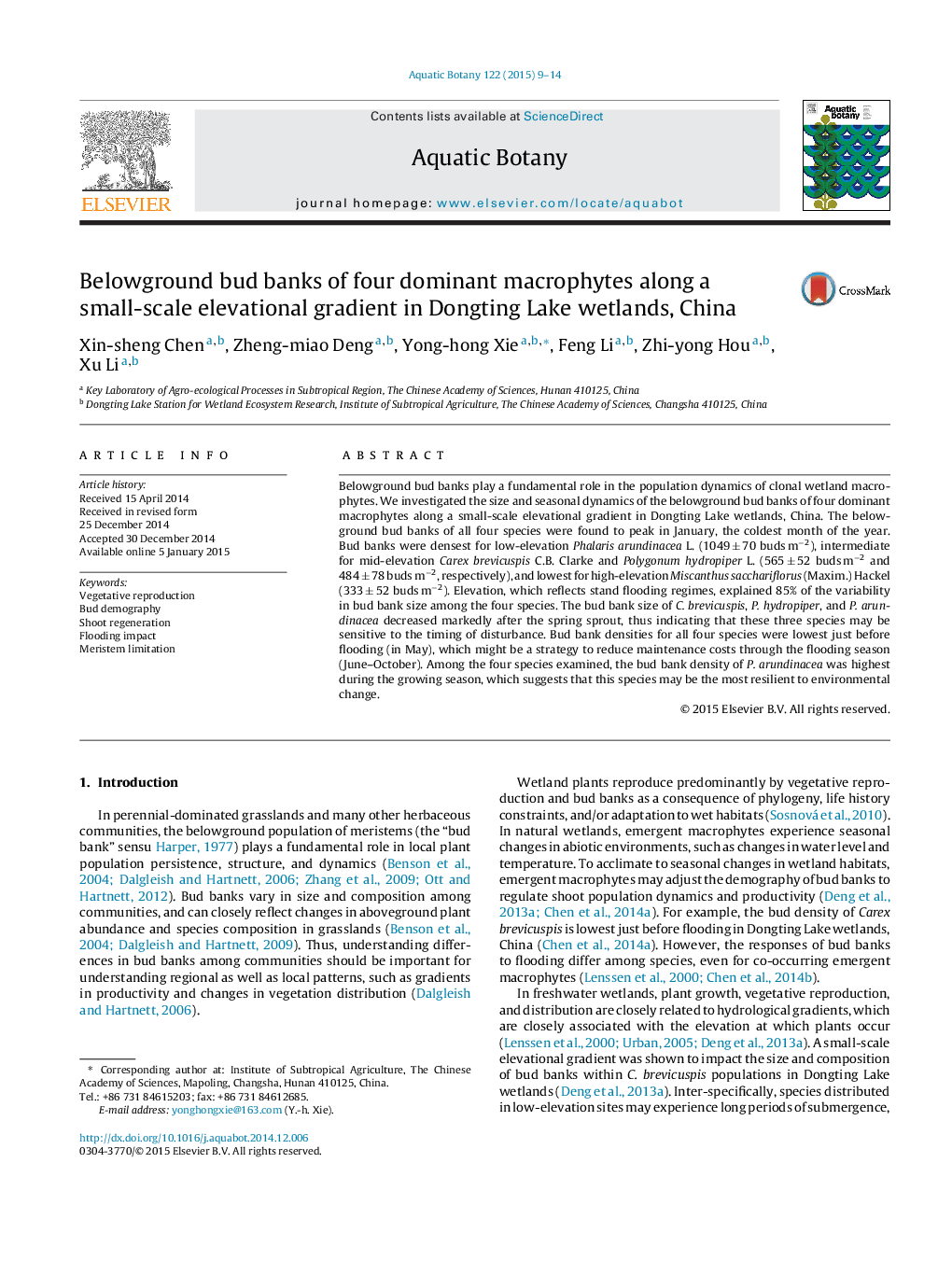| کد مقاله | کد نشریه | سال انتشار | مقاله انگلیسی | نسخه تمام متن |
|---|---|---|---|---|
| 4527667 | 1625820 | 2015 | 6 صفحه PDF | دانلود رایگان |

• Elevation explained 85% of the variability in peak bud bank density among emergent wetland species.
• Bud banks were found to peak in winter and were lowest before flooding season.
• Macrophytes may adjust the demography of bud banks as an adaptive response to hydrological change.
Belowground bud banks play a fundamental role in the population dynamics of clonal wetland macrophytes. We investigated the size and seasonal dynamics of the belowground bud banks of four dominant macrophytes along a small-scale elevational gradient in Dongting Lake wetlands, China. The belowground bud banks of all four species were found to peak in January, the coldest month of the year. Bud banks were densest for low-elevation Phalaris arundinacea L. (1049 ± 70 buds m−2), intermediate for mid-elevation Carex brevicuspis C.B. Clarke and Polygonum hydropiper L. (565 ± 52 buds m−2 and 484 ± 78 buds m−2, respectively), and lowest for high-elevation Miscanthus sacchariflorus (Maxim.) Hackel (333 ± 52 buds m−2). Elevation, which reflects stand flooding regimes, explained 85% of the variability in bud bank size among the four species. The bud bank size of C. brevicuspis, P. hydropiper, and P. arundinacea decreased markedly after the spring sprout, thus indicating that these three species may be sensitive to the timing of disturbance. Bud bank densities for all four species were lowest just before flooding (in May), which might be a strategy to reduce maintenance costs through the flooding season (June–October). Among the four species examined, the bud bank density of P. arundinacea was highest during the growing season, which suggests that this species may be the most resilient to environmental change.
Journal: Aquatic Botany - Volume 122, April 2015, Pages 9–14